- Italy Tours Home
- Italy Ethos
- Tours 2023
- Blog
- Contact Us
- Dolomites
- Top 10 Dolomites
- Veneto
- Dolomites Geology
- Dolomiti Bellunesi
- Cortina
- Cadore
- Belluno
- Cansiglio
- Carso
- Carnia
- Sauris
- Friuli
- Trentino
- Ethnographic Museums
- Monte Baldo
- South Tyrol
- Alta Pusteria
- Dobbiaco
- Emilia-Romagna
- Aosta Valley
- Cinque Terre
- Portofino
- Northern Apennines
- Southern Apennines
- Italian Botanical Gardens
- Padua Botanical Garden
- Orchids of Italy
The
Butterfly House in Bordano, a Corner of Tropics Among the Mountains of Friuli.
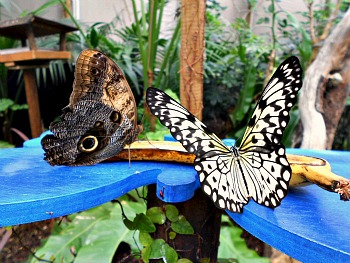
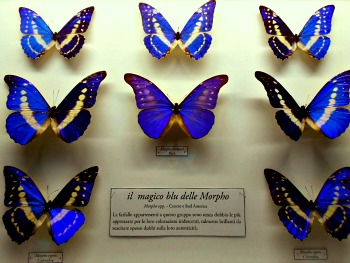
Unexpected Exotic Nature at the Alps’ Foothills
The Butterfly House (of which see an image above) is an amazing corner of exotic nature with plants and animals of surprising colours and shapes, where one can admire hundreds of butterflies flying free.
It is located in Bordano, a small municipality in the Pre-Alps of Friuli situated at the fringes of the historic region of Carnia (geographically speaking, it is just out of it), and also a short distance away from other interesting places to visit such as Gemona del Friuli with its impressive Duomo (a picture of the Duomo is at the bottom of the page) and the medieval walled town of Venzone.
The Butterfly House represents a new museum model, where visitors are projected into an astonishing natural reality, rich in content and important for conveying key concepts concerning biology, ecology and the natural sciences in general.
A vast section is dedicated to the ‘language of colours’ (see the picture above, for instance, portraying the amazing electric blue of the Morpho butterfiles, which can be described as a ‘structural colour’), and it teaches to interpret the colours of butterflies’ wings, allowing visitors to decipher what these beautiful and elegant creatures ‘say’ with their spectacular flights and colour displays.
‘Weapons of Nature’ is instead a new didactic-naturalistic exhibition related to the strategies of defence/offence in the animal world – especially in regards to reptiles and small mammals. It is a display that illustrates how evolution has given origin to diverse ‘natural weapons’, thanks to which several organisms have survived natural selection.
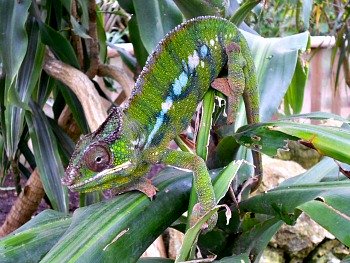
The elements of this exhibition consist of terrariums and aquariums in which there are living creatures such as frogs, fishes, reptiles, insects – as well as other species – and where their respective natural environmental conditions are recreated (see the image above).
The great innovation of this exhibition within an exhibition consists of focussing also on other strategies – such as the scents that certain plants and animals have developed as adaptation strategies in order to communicate.
In the interior of the Butterfly House hundreds of specimens can be observed, free to fly and intent on communicating passion, fear, deceit – and who knows what else…
Those who choose to visit the Butterfly House will find themselves involved in an ambitious project of environmental protection and sustainable development, whether they are conscious of it or not.
An important archive with hundreds of dried specimens, perfectly conserved (as in the image below), is also kept on display here.
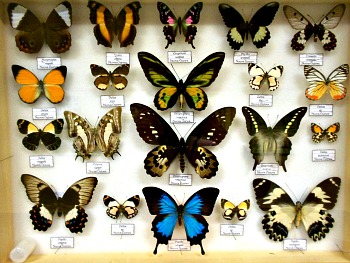
Monte San Simeone, Epicentre of the Terrible 1976 Friuli Earthquake
Monte San Simeone (1,505 m), once known also as ‘Col Taront’, was the epicentre of the devastating earthquake that hit Friuli in 1976, and owes its name to the saint to which the little church on the summit is dedicated, found at 1,215 metres on a plateau near the hilltop.
From a naturalistic point of view, Monte San Simeone is a good representative of the Friuli Pre-Alps (or ‘Prealpi Friulane’); on its plateau, beech woods can be found side by side with mountain meadows, where the rare and splendid Apollo Butterfly can also be seen.
Its slopes are dominated by woods of Hop hornbeam (Ostrya carpinifolia), flowering Manna ash (Fraxinus ornus) and Downy (or Pubescent) oak (Quercus pubescens). In certain particularly damp locations, Sycamore and Common (or European) ash can also be found.
Monte San Simeone is particularly rich in fauna too. There are rock- and black- partridges, roe deer and wild boar, and with a bit of luck you can also spot red deer and mouflon; often, impressive griffon vultures from the reserve at Laghi di Cornino stray into the area too, looking for food.
The summit of Monte San Simeone can be reached either by a tarred road, or with a trek of about 2 hours.
Thirty-five years after the tremendous 1976 earthquake, which struck this area of Friuli on May 6th (and as we said the epicentre was right here, under Monte San Simeone), the mountain communities of Gemona, Valcanale and Canale del Ferro – together with the municipality of Bordano – have come together to create an information area at Interneppo, which assists with the passing on of information regarding innovative technical solutions for protection against earthquakes.
Besides giving out information, the area also displays the ‘Monument to the insulator’ – celebrating the work and the effectiveness of this anti-seismic device which was used for the first time in the world at theViadotto di Somplago, which can be seen from here. The monument is made of steel, and it includes a model of the device.
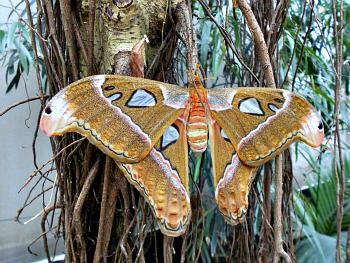
Bordano, the ‘Town of Butterflies’
Bordano, home to the Butterfly House (described before, and of which another beautiful specimen is pictured above), lies at the foothill of Monte San Simeone (1,505 m), and has become known as ‘the town of butterflies’. The presence of many butterflies (more than 100 species, plus 500 moths) is due to the great variety of habitats offered by the slopes of Monte San Simeone.
The municipality of Bordano has therefore devised a footpath with which to discover this particular fauna. It starts from just above town, at the beginning of via Sella Piccola, and after an initial stretch uphill through dense woodland, the path passes through flatter areas, where small clearings open up, to finally join the road that returns to town. Information boards have been placed along the way to describe the main butterfly species that can be seen while on excursion. It is an easy trail, whose duration is of approximately two hours.
Between 1996 and 2000 nearly 300 murals were also realized on the walls of public and private buildings in Bordano and Interneppo, which have transformed the streets into a sort of open-air galleries. The murals are realized with a competition that every five years brings together artists from all over the world – the common theme for these evocative modern frescoes being, of course, that of ‘butterflies’.
In the vicinity of Bordano, the Lake of Cavazzo – Lago di Cavazzo or Lake of the Three Comuni – is the most extensive natural basin in Friuli, covering an area of almost 2 sq km. Today it is possible to discover the beauty and tranquillity of this place thanks to an easy footpath which surrounds the lake along its banks, of recent construction. It is a gravel footpath interspersed with small wooden bridges, which leads eventually to the nearby village of Somplago (below, a picture of the Duomo at Gemona, one of the foremost monuments in the area – a jewel not to be missed, and whose visit can easily be combined with the Butterfly House).
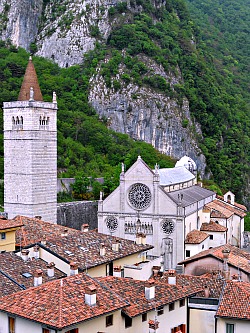
The Cornino Lake Nature Reserve
The Cornino lake Nature Reserve was constituted by Regional Law, in consideration of the particular characteristics of the area and the great naturalistic value of its various environmental components. It is a Pre-Alpine area characterised by a wide range of calcareous rock faces, as well as detritic fans and landslides, situated right next to the pebbly banks of the Tagliamento river. The karstic (limestone) morphology, associated with outcrops of carbonatic (or carbonaceous) rock, creates a craggy and wild landscape with particular lithological and hydrological characteristics. The slopes that join the lake basin make up the body of an ancient landslide, and contribute to the formation of detritic fans of more recent origin.
The Cornino lake was formed in a vast depression within the area, separated from the Tagliamento flood plain by a long hummock stretching out in a longitudinal direction. The morphology and aspect of the hills and the presence of the river – as well as the bio-geographic importance of the eastern Pre-Alps – create extremely interesting situations in terms of vegetation and fauna, with the presence of elements of different chorology, here present at the limit of their geographic distribution. A number of experimental and scientific research initiatives have also been started in the area, aimed at obtaining social and economic benefit.
The Lake. The lake basin covers an area of about 8,500 m², and has a maximum depth of 8 metres. The lake has particularly clear waters, of a beautiful turquoise-blue colour. The water stays at a virtually constant temperature of 10 C all year round. There are no confluents: the lake is fed by underwater springs which are of the karstic underground type, associated with the circulation system through the calcareous rocks and – to a lesser degree – with the underground water table, fed by the Tagliamento river. Round the edges of the lake there is a limited band of aquatic vegetation, while the algal flora is of the greatest interest. This is an oligotropic basin containing a few introduced species of fish – principally belonging to the Salmonidae and Cyprinidae families – as well as fresh water crayfish. Additionally, on the night of Dec 24th, every year, an underwater representation of the Nativity takes place at the Cornino lake, and it has become a deep-rooted tradition in the local community.
Vegetation. Environmental peculiarities are reflected in the flora and vegetation, creating a decidedly unusual and interesting phyto-geographical setting. The flora includes thermophilic species, with abundant growth of xerophilic vegetation on rock and scree slopes, as well as on the Tagliamento flood plain. One of the most interesting aspects is associated with stands of Holm Oak (Qurecus ilex) in the rocky areas. The Holm Oak thickets present in the Pre-Alps of Friuli are to be considered a relic, since they are the result of the colonisation that took place in the post-glacial era. In the Pre-Alpine area, Holm Oak extends to the northernmost edge of the zone considered here.
The thermophilic scrub that covers the hills of the Nature Reserve consists largely of Manna Ash (Fraxinus ornus), Hop Hornbeam (Ostrya carpinifolia) and Downy (or Pubescent) Oak (Quercus pubescens), a plant association known as ‘orno-ostrieti’, with numerous examples of heliophilous shrubs. The detrital fans are environments that are constantly changing, with diversified combinations of vegetation that help to maintain the variety and richness of the different habitats. Present in this location, too, are Smoke-bush (Cotinus coggygria) and Terebinth (Pistacia terebinthus) – species otherwise typical of the Mediterranean maquis.
Fauna. The fauna present in the Nature Reserve is also rich and diversified. The eastern Pre-Alps are home to numerous localised and endemic species in all classes of animals. One of the most interesting aspects is the wide variety of butterflies and birds. Numerous species are present in the area, typical of quite distinct bird communities, characteristic of both the plains and the mountains. On the pebbly banks of the Tagliamento river and in the neighbouring areas – in addition to common flat- and wetland species (Heron, Sandpiper, Duck, Seagull) – other species associated with arid and steppe environments can be found too, as well as birds that have now become highly localised in the region, such as Woodlark and Ortolan Bunting. The woods are home to a bird population typical of mesotherm-type forests, the dominant species being Blackbird, Blackcap, Chiffchaff, Great Tits, Chaffinch, Nightingale and Jay. In the detrital fans and more open areas, Rock Bunting and Bonelli’s Warbler are also common. The rocky areas and ledges are used for nesting by Raven, Crag Martin and various birds of prey, while common mammal species include Roe Deer, Hare, Badger and Fox.
The Griffon. The griffon (Gyps fulvus) is a large vulture with a wing span almost three times its size, weighing 8-12 kg. It has broad wings with splayed tips, and uses thermal currents for soaring and gliding. It is able to travel great distances, equivalent to hundreds of kilometres in one day, and often flies more than 100 km from the nesting colony in search for food. Exclusively a carrion feeder, it feeds on the carcasses of hoofed animals – even small ones. It is a gregarious species, living in large colonies, with a marked social behaviour that characterises its habits in relation to the environment. The griffon was once present throughout the Mediterranean basin and vast areas of the Alps and Central Europe. Seasonal migrations also led to the appearance of hundreds of griffons – from Southern Europe – in the Alps and surrounding territories. The marked decline of the species in the last century has significantly reduced its distributional area; in Italy, the only remaining breeding ground is Sardinia, but griffons continue to appear – in small numbers – in the eastern Alps too, namely during the summer. At present, the closest colonies to the Alps are those located on the islands of the Kravner gulf (Golfo del Carnaro) near Rijeka, in Croatia (Fiume in Italian).
Birds of Prey. The area is particularly important due to the presence of numerous diurnal and nocturnal birds of prey. The richness of biotypes and eco-tonal zones creates ideal nesting and feeding conditions for the various species; the regional populations are at their densest in the band between the flat-lands and the mountains. Due to significant geographical points of reference (such as the hills and the river) the area is also on an important migratory route, which leads to the regular appearance of numerous migrating species in autumn and spring, such as White and Black Stork, Woodpigeon, Cormorant, Geese and various types of Sparrow – as well as birds of prey.
These features mean that the Cornino lake Nature Reserve is one of the most interesting environments within the entire Alpine range for observing birds of prey, with excellent opportunities for bird watching in general. Among the most common nesting species are Buzzard, Black Kite, Kestrel, Sparrow-hawk and Hobby. Other species which nest in the surrounding zones enter the area in search of food and can regularly be observed; amongst these are Short-toed- and Golden Eagle, Honey Buzzard, Gosh-hawk and Peregrine Falcon. During the migration period, in addition to the above species, it is possible to observe other birds of prey such as Marsh-, Hen- and Montagues’ Harrier, Osprey, Orange-legged Hobby and Merlin.
The griffon
colony also attracts various diurnal birds of prey, including species that are
rare in Italy but have been observed on several occasions in the area: Red
Kite, Egyptian Vulture, Fish-, Booted-, Spotted- and Imperial Eagle. With
regards to nocturnal birds of prey, the most important species present is
Eagle Owl, which finds an ideal habitat for nesting and resting on the rock
faces, using the flat-land areas for hunting instead. Tawny- and Little Owls
are also common, while Long-eared-, Scops’- and Barn Owl only appear
locally.
Return from Butterfly House to Friuli
Return from Butterfly House to Italy-Tours-in-Nature
Copyright © 2012 Italy-Tours-in-Nature

New! Comments
Have your say about what you just read! Leave me a comment in the box below.